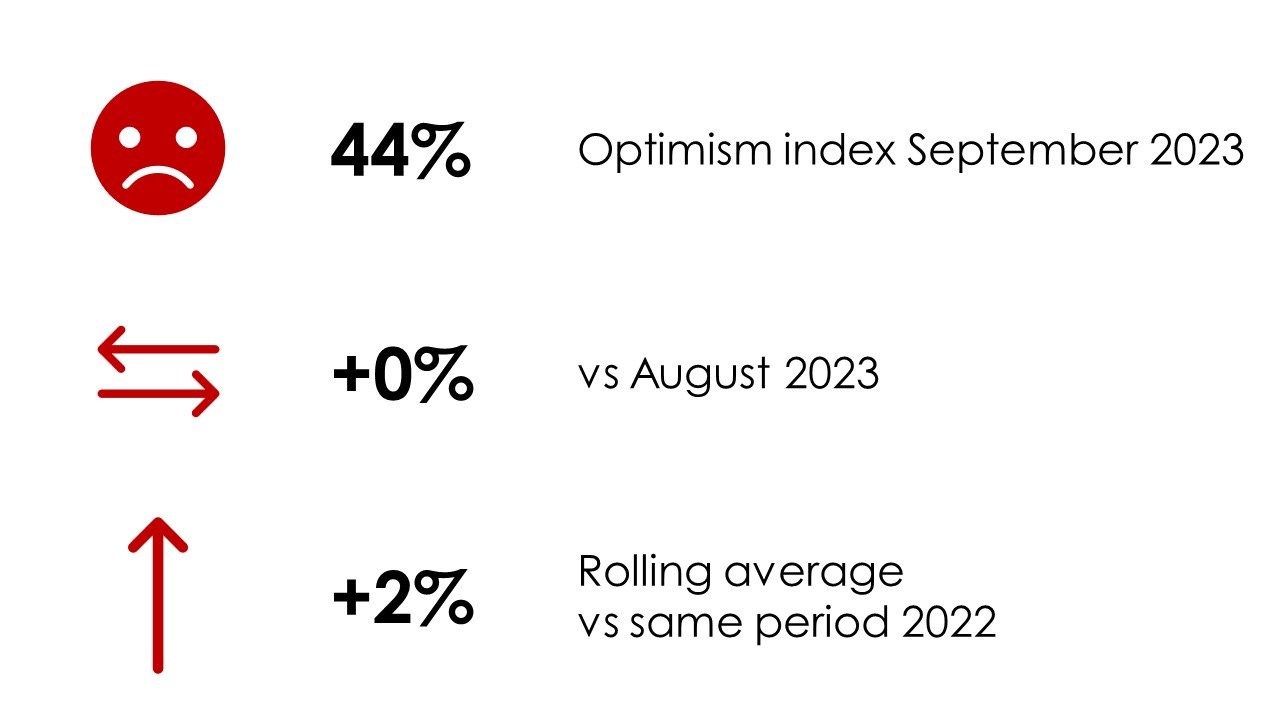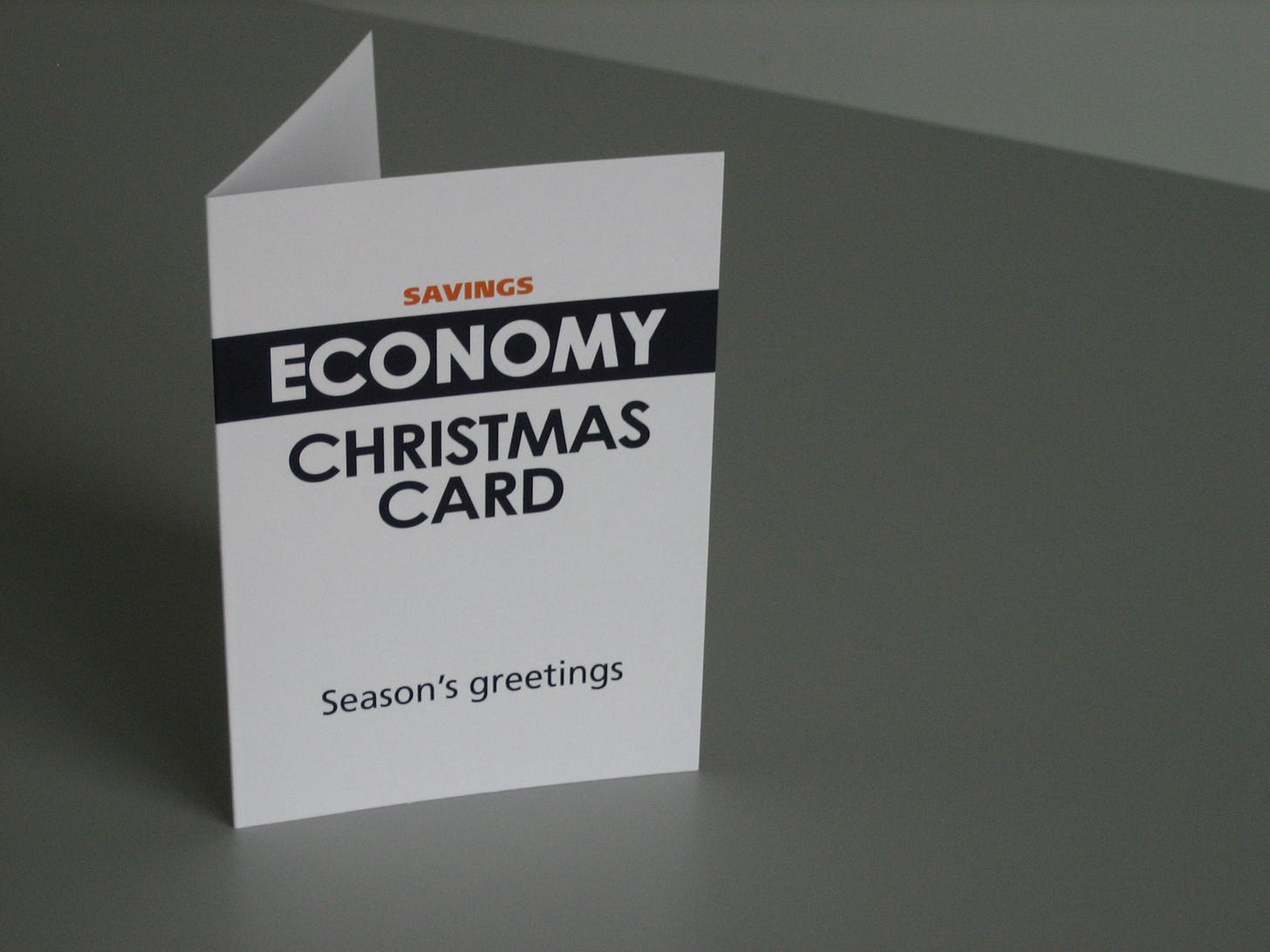Newsletter News
The news is that the Trajectory newsletter - in the format you have known it - is dead.
We’ve applied Joseph Schumpeter’s idea of creative destruction by giving the old newsletter the benefit of some semtex and are now publishing our monthly update via Substack. My estimable colleague, Tom Johnson, already uses Substack for his Slow Futures pieces in which he talks about things that don’t change much (but which are powerful).
Trajectory’s former newsletter-generating machine was a malevolent beast, lit by gas-lamps and fuelled by spite. By contrast, Substack is a joy to use. Consequently, I am optimistic about the future, however not everyone else feels the same way as our latest Optimism Index proves. More on that in a minute…
Highly-Prized
Trajectory is a finalist at this year’s Market Research Society awards.
We’ve become finalists in recognition of our work with Fair4All Finance in the last two years. That work created a consumer segmentation of the 17.5 million financially vulnerable people in United Kingdom. The impact of our two-phase, multi-methodology project is considerable as Fair4All have disseminated the findings amongst Britain’s banks, insurance companies and credit unions. Fair4All have also shared the work publicly and you can see it here.
This research project was given extra urgency by the cost of living crisis and an additional wave of fieldwork ran early in 2023 to assess the impact of inflation on the six consumer segments.
It’s fair to say that the Trajectory team all felt personally committed to this project. We travelled across England, Wales, Scotland and Northern Ireland, meeting those with the least. It was a sobering and humbling experience.
This five-minute documentary illustrates the project through the experiences of one individual.
Oktoberfest
It may be October, but we’re not in a festive mood.
It’s alarming to realise that it’s now twenty months since we had an optimism score above fifty (meaning that, on balance, the majority of the population are optimistic about the future).
Given that gas boilers are about to emerge from their summer hibernation, it’s likely that concerns about energy bills will now act as a drag on optimism. Optimism peaked at 46 back in July and it seems unlikely that this figure will be surpassed this year.
There has been some better news on the economy in recent weeks with inflation (CPIH) down to 6.3% and with no further increase in interest rates last month. However, most consumers aren’t feeling it; net confidence in the national economy is lower now than it was in the spring and summer. In addition, there was a noticeable increase in concern about the cost of living in September.
Trajectory subscribers have access to the full detail of our September data.
The Ghost Of Christmas Future
Next Trajectory Trends Briefing: Thursday October 26th at 09:00.
In Avengers: Endgame, Thanos - destroyer of one half of humanity - says; “I am inevitable.” Noddy Holder must feel the same way every December.
How much of Christmas is inevitable? Are the old traditions holding up or is an increasingly secular British public behaving differently during the festive break? What influence are prevailing consumer trends having on the shape and style of the holidays?
At our next webinar, we’ll be considering how Christmas is changing in the long term. We’ll also be anticipating the Christmas of 2023 - now only 76 shopping days away.
Our analysis will be based upon the latest wave of our monthly quantitative research. Our fieldwork is fresh from the oven and as hot and welcome as mince pies after an afternoon at the Trafford Centre / Braehead / Brent Cross.
The session is free (truly, a Christmas gift) but to join you’ll need to have been good all year. It will take place on October 26th at 09:00.
When All Our Troubles Seemed So Far Away
Every month I’m looking at how brands respond to consumer trends.
Back in May (a month we all look back on fondly) our trends briefing looked at the power of nostalgia.
We reflected that nostalgia tells us more about the present than the past.
With optimism submerged in negative territory all year, the past seems a good place to be – familiar and comforting. For marketeers, there’s an appeal in harking back to the past; today’s products can look attractive when viewed in sepia.
The tricky bit is reconciling the new with the old, of combining the charm of yesteryear with the efficiency of the present.
In the four months since we gave that presentation nostalgia has been employed by brands like there’s no tomorrow.
In September, Vogue magazine put 1990s supermodels Christy Turlington, Naomi Campbell, Cindy Crawford and Linda Evangelista on the cover of both the UK and US editions of the magazine. In the same month Claudia Schiffer came out of designer retirement to stalk the Versace catwalk in Milan in a blaze of flashbulbs and “toothachingly-sweet pastels.” Versace’s newest collection references some of the brand’s creations from 1995. The Guardian commented: “Nineties nostalgia is big business in pop culture right now, so it was a power move to remind the assembled fashion industry that Versace can lay claim to the irony-laden cuteness of the era…”
Meanwhile, at the top end of the camera market, Nikon has launched the Zf, describing it as; “where classic Nikon analogue camera design meets advanced Z series tech for next-level performance. It’s the perfect fusion of past and present.” The Z f was launched in September and its retro looks will remind some of their classic FM2 camera of forty years ago. The Z f returns to using the physical controls – dials and switches – of analogue cameras, something that makes this type of camera easier to use than the DSLR cameras that have (up until now) defined digital photography. Nikon aren’t alone in doing this - many Fuji cameras look (and work) like old film cameras.
September was also a significant month for new cars. The Italians reminded everyone of their incomparable design heritage when Alfa Romeo wheeled out the 33 – a limited edition supercar inspired by the original 33 Stradale of 1969. The 1969 car is so beautiful that Cindy Crawford and Linda Evangelista won’t be photographed next to one. Across the alps in Bavaria, BMW whipped the dust cover from their newest concept car; the Neue Klasse (literally “new class”). The concept foreshadows new models that will be in showrooms between 2025 and 2027. It’s now hard to believe but in the 1950s BMW were – financially – stationary on the hard shoulder with the insolvency indicators flashing brightly. The original Neue Klasse cars of 1962 to 1972 created a new design language for the brand and set it on the autobahn to becoming the Ultimate Money-Making Machine that we know today. The Neue Klasse saved BMW.
There is a connection between Vogue magazine, Nikon, Alfa Romeo and BMW. All of them face significant challenges. Fashionable types look to Instagram and its army of influencers – Vogue is no longer the sole arbiter of next season’s lewks. Nikon, after years of making single lens reflex cameras (SLRs), must meet the demand for more modern, smaller, ‘mirrorless’ cameras. The Z f is their response. BMW must meet the challenge of Tesla and switch completely to making battery electric vehicles – the new Neue Klasse concept previews how that will happen. (One can only speculate on how the BMW board must have reacted to the news that the UK Government is pushing back the ban of internal combustion engines to 2035 – the boardroom drinks cabinet may now be somewhat depleted.)
These diverse companies must take their customers to a new era and to new products. Addressing the past may reassure consumers that traditional values will be maintained in new products.
There’s also a whiff of companies seeking to reassure themselves that the future will be as bright as the best of the past.
Mouse Party
Trajectory’s sister company - FieldMouse - scurried into London recently for the Market Research Operations Awards night. Their journey was not in vain as they picked up an award for recruitment excellence. I’ve seen some photographs of the evening that followed and - true to their nature - the FieldMice enjoyed a cheesy celebration of their win.
FieldMouse recruit participants for the purposes of market research and they; “champion the fair representation of rural, regional and rarely-heard voices in all market research.” Something that they are very good at.
Congratulations to all the FieldMice.
Look At What You’ve Got Me Into
Patrick Brennan is Trajectory’s man of marketing science. In the last few years he has developed considerable expertise in ‘mental availability’. This is more than just brand awareness - it relates to the associations we have with a brand and building new memories that keep the brand at the forefront of our attention; in other words, salience. Mental availability is created from category entry points (a complex set of variables which include the motivations to purchase and the occasions when purchases happen).
To illustrate his thinking, Patrick has written an article on the category entry points to tea and coffee. He shows how knowledge of CEPS can be used to grow a brand and to measure how well it performs when compared to rival brands.
Understanding entry points allows marketeers to manage their brands more effectively and it allows organisations to developer sharper strategies. If you would like to know more about our mental availability work, please let me know: barry@trajectorypartnership.com.







